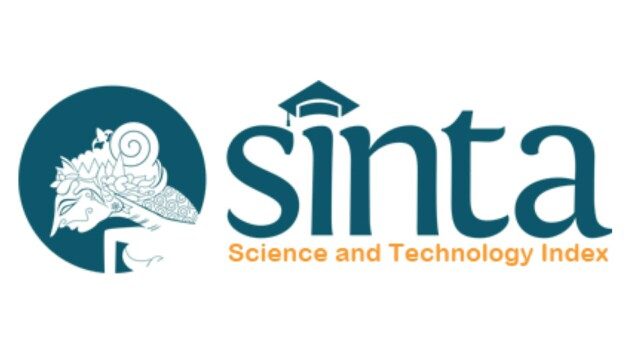Physical Characterization of Briquettes Composed of Corn Cob and Sawdust Waste Mixtures
Sari
Kata Kunci
Teks Lengkap:
PDFReferensi
S. Schmidt and D. Laner. 2023. “Environmental Waste Utilization score to monitor the performance of waste management systems: A novel indicator applied to case studies inGermany,” Resources, Conservation & Recycling Advances, vol. 18, p. 200160. doi: https://dx.doi.org/10.1016/j.rcradv.2023.200160
P. Jiang et al.. 2023. “Blockchain technology applications in waste management: Overview, challenges and opportunities,” Journal of Cleaner Production, vol. 421, p. 138466. doi: https://dx.doi.org/10.1016/j.jclepro.2023.138466
M. Zhang, F. Wang, R. Su, W. Qi, and Z. He. 2010. “Ethanol production from high dry matter corncob using fed-batch simultaneous saccharification and fermentation after combined pretreatment,” Bioresource Technology, vol. 101, no. 13, pp. 4959–4964. doi: https://dx.doi.org/10.1016/j.biortech.2009.11.010
M. A. Ekemen and S. Harun. 2020. “Data in brief Dataset on social capital and knowledge integration in project management,” no. February, pp. 1–6. doi: https://dx.doi.org/10.1016/j.dib.2020.105233
N. Kongprasert, P. Wangphanich, and A. Jutilarptavorn. 2019. “Charcoal Briquettes from Madan Wood Waste as an Alternative Energy in Thailand,” Procedia Manuf, vol. 30, pp. 128–135. doi: https://dx.doi.org/10.1016/j.promfg.2019.02.019
J. Schobing et al.. 2023. “Inventory of the French densified log market: Characterization and emission factors measurement of twenty commercial briquettes,” Fuel, vol. 335, p. 127060. doi: https://dx.doi.org/10.1016/j.fuel.2022.127060
M. A. Waheed, O. A. Akogun, and C. C. Enweremadu. 2023. “Dataset on the performance characteristics of briquettes from selected agricultural wastes using a piston-type briquetting machine,” Data Brief, vol. 50, p. 109476. doi: https://dx.doi.org/10.1016/j.dib.2023.109476
N. Kongprasert, P. Wangphanich, and A. Jutilarptavorn. 2019. “Charcoal Briquettes from Madan Wood Waste as an Alternative Energy in Thailand,” Procedia Manufacturing, vol. 30, pp. 128–135. doi: https://dx.doi.org/10.1016/j.promfg.2019.02.019
K. Z. Ku Ahmad, K. Sazali, and A. A. Kamarolzaman. 2018. “Characterization of fuel briquettes from banana tree waste,” Materials Today: Proceedings, vol. 5, no. 10, Part 2, pp. 21744–21752. doi: https://dx.doi.org/10.1016/j.matpr.2018.07.027
E. F. Aransiola, T. F. Oyewusi, J. A. Osunbitan, and L. A. O. Ogunjimi. 2019. “Effect of binder type, binder concentration and compacting pressure on some physical properties of carbonized corncob briquette,” Energy Reports, vol. 5, pp. 909–918. doi: https://dx.doi.org/10.1016/j.egyr.2019.07.011
P. K. Gandam et al.. 2022. “Corncob-based biorefinery: A comprehensive review of pretreatment methodologies, and biorefinery platforms,” Journal of the Energy Institute, vol. 101, pp. 290–308. doi: https://dx.doi.org/10.1016/j.joei.2022.01.004
J. Han, R. Cao, X. Zhou, and Y. Xu. 2020. “An integrated biorefinery process for adding values to corncob in co-production of xylooligosaccharides and glucose starting from pretreatment with gluconic acid,” Bioresource Technology, vol. 307, p. 123200. doi: https://dx.doi.org/10.1016/j.biortech.2020.123200
S. Asri and R. T. Indrawati. 2018. “Pengaruh Bentuk Briket Terhadap Efektivitas Laju Pembakaran,” Jurnal Penelitian dan Pengabdian Kepada Masyarakat UNSIQ, vol. 5, no. 3, pp. 338–341. doi: https://dx.doi.org/10.32699/ppkm.v5i3.481
F. A. Kurniawan and A. A. Syukron. 2019. “Karakteristik Briket Bioarang dari Campuran Limbah Baglog Jamur Tiram (Pleurotus Ostreatus) dan Sekam Padi,” Indonesian Journal of Applied Physics, vol. 9, no. 02, p. 76. doi: https://dx.doi.org/10.13057/ijap.v9i2.34478
Zhang, M., Wang, F., Su, R., Qi, W., & He, Z. 2010. Ethanol production from high dry matter corncob using fed-batch simultaneous saccharification and fermentation after combined pretreatment. Bioresource Technology, 101(13), 4959–4964. doi: https://dx.doi.org/10.1016/j.biortech.2009.11.010
R. N. Ossei-Bremang, E. A. Adjei, F. Kemausuor, T. Mockenhaupt, and T. Bar-Nosber. 2024. “Effects of compression pressure, biomass ratio and binder proportion on the calorific value and mechanical integrity of waste-based briquettes,” Bioresour Technol Rep, vol. 25, p. 101724. doi: https://dx.doi.org/10.1016/j.biteb.2023.101724
M. M. Manyuchi, C. Mbohwa, and E. Muzenda. 2019. “Evaluating the Usability of Bio Coal from Sugar Cane Bagasse as a Solid Fuel,” Procedia Manuf, vol. 33, pp. 516–521. doi: https://dx.doi.org/10.1016/j.promfg.2019.04.064
R. N. Ossei-Bremang, E. A. Adjei, F. Kemausuor, T. Mockenhaupt, and T. Bar-Nosber. 2024. “Effects of compression pressure, biomass ratio and binder proportion on the calorific value and mechanical integrity of waste-based briquettes,” Bioresour Technol Rep, vol. 25, p. 101724. doi: https://dx.doi.org/10.1016/j.biteb.2023.101724
L. O. Mohammad Firman, R. B. Adji, Ismail, and R. A. Rahman. 2023. “Increasing the feasibility and storage property of cellulose-based biomass by forming shape-stabilized briquette with hydrophobic compound,” Case Studies in Chemical and Environmental Engineering, vol. 8, p. 100443. doi: https://dx.doi.org/10.1016/j.cscee.2023.100443
V. A. Yiga, A. Nuwamanya, A. Birungi, M. Lubwama, and H. N. Lubwama. 2023. “Development of carbonized rice husks briquettes: Synergy between emissions, combustion, kinetics and thermodynamic characteristics,” Energy Reports, vol. 9, pp. 5977–5991. doi: https://dx.doi.org/10.1016/j.egyr.2023.05.066
W. T. Tomen, B. S. Diboma, B. V. Bot, and J. G. Tamba. 2023. “Physical and Combustion properties investigation of hybrid briquettes from tropical Sawdust: Case study of Iroko (Milicia excelsa) and Padouk (Pterocarpus soyauxii),” Energy Reports, vol. 9, pp. 3177–3191. doi: https://dx.doi.org/10.1016/j.egyr.2023.02.006
DOI: https://doi.org/10.24176/simet.v15i2.11657
Refbacks
- Saat ini tidak ada refbacks.
Indexed by:





Simetris : Jurnal Teknik Mesin, Elektro dan Ilmu Komputer is licensed under a Creative Commons Attribution-NonCommercial-ShareAlike 4.0 International.
Dedicated to:













